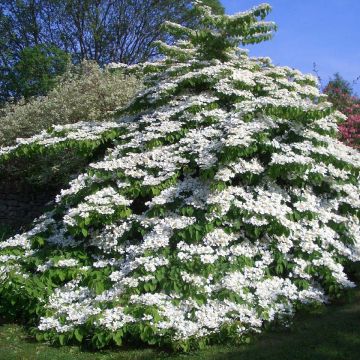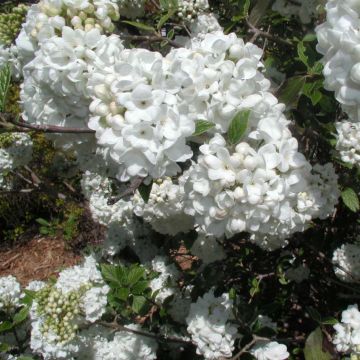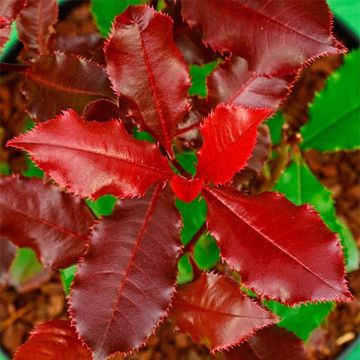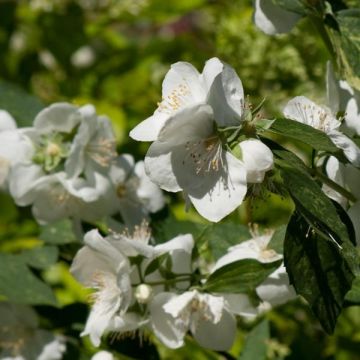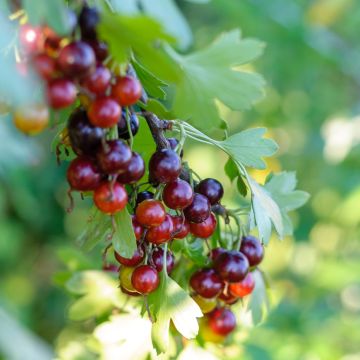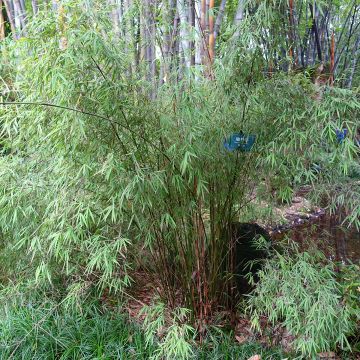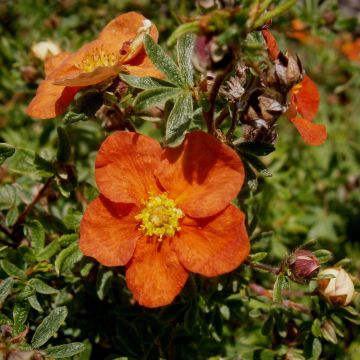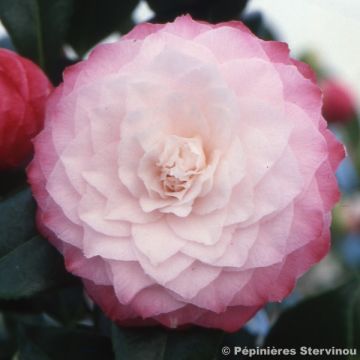

Viburnum trilobum Spring Red Compact


Viburnum trilobum Spring Red Compact
Viburnum trilobum Spring Red Compact
Viburnum trilobum Spring Red Compact
American Cranberry Bush, High Bush Cranberry, Cranberry Viburnum
Special offer!
Receive a €20 voucher for any order over €90 (excluding delivery costs, credit notes, and plastic-free options)!
1- Add your favorite plants to your cart.
2- Once you have reached €90, confirm your order (you can even choose the delivery date!).
3- As soon as your order is shipped, you will receive an email containing your voucher code, valid for 3 months (90 days).
Your voucher is unique and can only be used once, for any order with a minimum value of €20, excluding delivery costs.
Can be combined with other current offers, non-divisible and non-refundable.
Why not try an alternative variety in stock?
View all →This plant carries a 24 months recovery warranty
More information
We guarantee the quality of our plants for a full growing cycle, and will replace at our expense any plant that fails to recover under normal climatic and planting conditions.
Would this plant suit my garden?
Set up your Plantfit profile →
Description
The Viburnum trilobum 'Spring Red Compact' is a variety of attractive trilobed bush from spring to autumn. It is a compact selection with a lovely dense and regular ball-shaped habit, with foliage that changes from spring red to glossy green in summer before turning shades of orange, red, and burgundy in autumn. The bush produces charming white flowers in late spring, soon replaced by numerous red berries. These fruits are enjoyed by birds and humans who can consume them, like cranberries.
Native to Canada and the northern United States, Viburnum trilobum is a deciduous bush that is extremely cold and wet soil tolerant. It thrives in any good, not too dry, garden soil. Formerly classified in the Caprifoliaceae family, it now belongs to the Adoxaceae family. The 'Spring Red Compact' variety, selected in the United States, stands out for its more modest growth, remarkable spring foliage, and abundant fruit production.
The plant forms a rounded, densely branched bush, reaching an average height of 1.70m (6ft) with a spread of 1.10m (4ft). Its growth rate is moderate. The branches are grey and erect. The abundant flowering begins in late May or early June. The white flowers form flattened clusters called corymbs at the ends of the branches. The larger sterile flowers surround a small centre of fertile button-shaped flowers on each flower head. This flowering is followed by generous fruiting on the bush until winter. The shiny red fruits attract birds, brightening up the shortest and gloomiest days of the year. Its foliage is deciduous, with leaves divided into three lobes (hence the plant's name) that are 5 to 10cm (2 to 4in) long and have strongly marked veins. They are a bright red when they first emerge in spring and gradually turn green by summer. From October, the foliage slowly takes on shades of orange, red, burgundy, and bordeaux.
Hardy well below -15°C (5°F), the 'Spring Red Compact' viburnum thrives in a sunny position to enhance its autumn colours in ordinary but not too dry soil. This beautiful bush can be used as a standalone specimen and in low-height mixed hedges or shrub borders. In this usage, it can be paired with other viburnums with staggered flowering times (V. lantana 'Mohican', V. x bodnantense 'Dawn', V. x burkwoodii), deciduous euonymus, or a Cotinus for autumnal flamboyance. This hardy plant creates a pleasant countryside atmosphere in the company of native plants such as medlar, hazel, hawthorn, Prunus mahaleb, blackthorn, and hedge honeysuckle.
Report an error about the product description
Viburnum trilobum Spring Red Compact in pictures
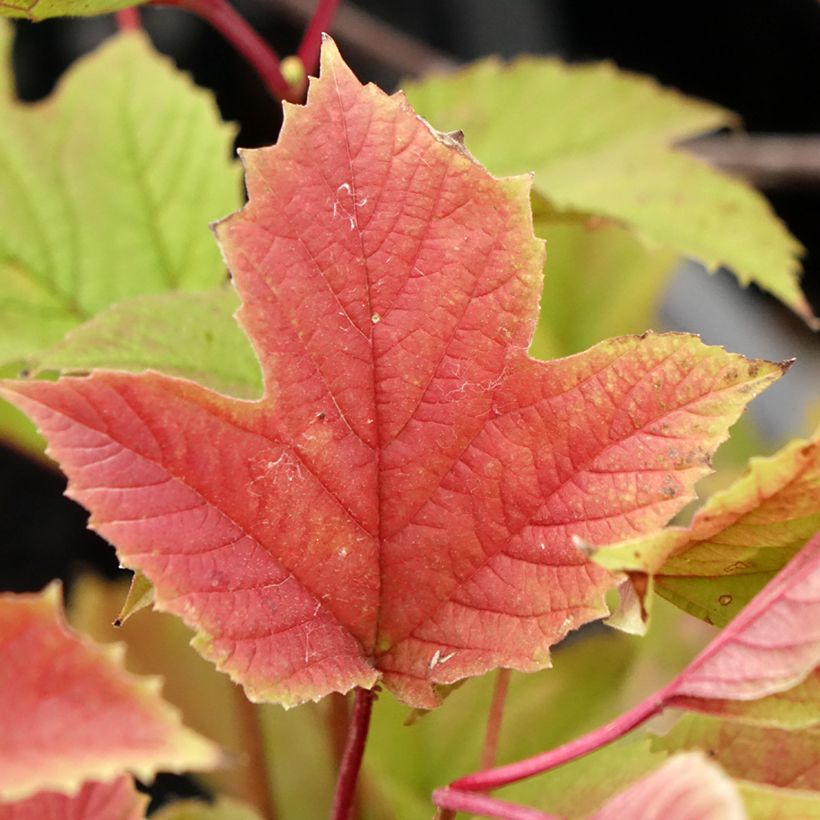

Plant habit
Flowering
Foliage
Botanical data
Viburnum
trilobum
Spring Red Compact
Caprifoliaceae
American Cranberry Bush, High Bush Cranberry, Cranberry Viburnum
Cultivar or hybrid
Planting and care
Viburnum trilobum and its varieties thrive in sunny locations. Plant them in moist soil from March to June and September to December (unless there is a frost). Any regular soil will do, as the plant shows no pH requirements and tolerates the presence of limestone. Its tolerance to wet but well-drained soils is excellent. However, if your substrate seems poor and rocky, provide drainage in very compact soils and enrich with compost over several years. Prune lightly after flowering, if necessary, mainly to remove dead wood or reduce the dimensions of the plant.
Planting period
Intended location
Care
This item has not been reviewed yet - be the first to leave a review about it.
Similar products
Haven't found what you were looking for?
Hardiness is the lowest winter temperature a plant can endure without suffering serious damage or even dying. However, hardiness is affected by location (a sheltered area, such as a patio), protection (winter cover) and soil type (hardiness is improved by well-drained soil).

Photo Sharing Terms & Conditions
In order to encourage gardeners to interact and share their experiences, Promesse de fleurs offers various media enabling content to be uploaded onto its Site - in particular via the ‘Photo sharing’ module.
The User agrees to refrain from:
- Posting any content that is illegal, prejudicial, insulting, racist, inciteful to hatred, revisionist, contrary to public decency, that infringes on privacy or on the privacy rights of third parties, in particular the publicity rights of persons and goods, intellectual property rights, or the right to privacy.
- Submitting content on behalf of a third party;
- Impersonate the identity of a third party and/or publish any personal information about a third party;
In general, the User undertakes to refrain from any unethical behaviour.
All Content (in particular text, comments, files, images, photos, videos, creative works, etc.), which may be subject to property or intellectual property rights, image or other private rights, shall remain the property of the User, subject to the limited rights granted by the terms of the licence granted by Promesse de fleurs as stated below. Users are at liberty to publish or not to publish such Content on the Site, notably via the ‘Photo Sharing’ facility, and accept that this Content shall be made public and freely accessible, notably on the Internet.
Users further acknowledge, undertake to have ,and guarantee that they hold all necessary rights and permissions to publish such material on the Site, in particular with regard to the legislation in force pertaining to any privacy, property, intellectual property, image, or contractual rights, or rights of any other nature. By publishing such Content on the Site, Users acknowledge accepting full liability as publishers of the Content within the meaning of the law, and grant Promesse de fleurs, free of charge, an inclusive, worldwide licence for the said Content for the entire duration of its publication, including all reproduction, representation, up/downloading, displaying, performing, transmission, and storage rights.
Users also grant permission for their name to be linked to the Content and accept that this link may not always be made available.
By engaging in posting material, Users consent to their Content becoming automatically accessible on the Internet, in particular on other sites and/or blogs and/or web pages of the Promesse de fleurs site, including in particular social pages and the Promesse de fleurs catalogue.
Users may secure the removal of entrusted content free of charge by issuing a simple request via our contact form.
The flowering period indicated on our website applies to countries and regions located in USDA zone 8 (France, the United Kingdom, Ireland, the Netherlands, etc.)
It will vary according to where you live:
- In zones 9 to 10 (Italy, Spain, Greece, etc.), flowering will occur about 2 to 4 weeks earlier.
- In zones 6 to 7 (Germany, Poland, Slovenia, and lower mountainous regions), flowering will be delayed by 2 to 3 weeks.
- In zone 5 (Central Europe, Scandinavia), blooming will be delayed by 3 to 5 weeks.
In temperate climates, pruning of spring-flowering shrubs (forsythia, spireas, etc.) should be done just after flowering.
Pruning of summer-flowering shrubs (Indian Lilac, Perovskia, etc.) can be done in winter or spring.
In cold regions as well as with frost-sensitive plants, avoid pruning too early when severe frosts may still occur.
The planting period indicated on our website applies to countries and regions located in USDA zone 8 (France, United Kingdom, Ireland, Netherlands).
It will vary according to where you live:
- In Mediterranean zones (Marseille, Madrid, Milan, etc.), autumn and winter are the best planting periods.
- In continental zones (Strasbourg, Munich, Vienna, etc.), delay planting by 2 to 3 weeks in spring and bring it forward by 2 to 4 weeks in autumn.
- In mountainous regions (the Alps, Pyrenees, Carpathians, etc.), it is best to plant in late spring (May-June) or late summer (August-September).
The harvesting period indicated on our website applies to countries and regions in USDA zone 8 (France, England, Ireland, the Netherlands).
In colder areas (Scandinavia, Poland, Austria...) fruit and vegetable harvests are likely to be delayed by 3-4 weeks.
In warmer areas (Italy, Spain, Greece, etc.), harvesting will probably take place earlier, depending on weather conditions.
The sowing periods indicated on our website apply to countries and regions within USDA Zone 8 (France, UK, Ireland, Netherlands).
In colder areas (Scandinavia, Poland, Austria...), delay any outdoor sowing by 3-4 weeks, or sow under glass.
In warmer climes (Italy, Spain, Greece, etc.), bring outdoor sowing forward by a few weeks.

































